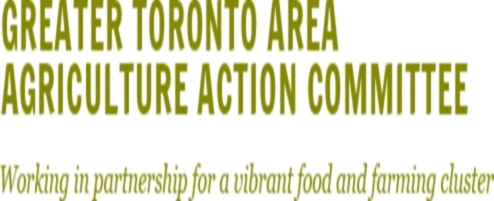
Features
Efficiency
Energy
EXCLUSIVE – GTA Ag Action Committee recognizes use of new technology in greenhouses vital to growth of ag industry
June 11, 2012 By Treena Hein

“Greenhouse growers are investing significantly in infrastructure and technology,” says Janet Horner, Executive Director, Greater Toronto Area Agricultural Action Committee (GTA AAC). “That adaptation of new technologies has allowed this sector to not only remain competitive but to become a leader in production, energy conservation, nutrient management, packaging and product development.”
Horner sees the greenhouse sector as one of the major players in the ‘food and farming cluster’ of the Golden Horseshoe – which contributes $12.3 billion to the provincial economy – but says that as southern Ontario’s greenhouse sector continues to grow, it faces serious impediments. The most serious, in her view, are the multiple layers of regulation and barriers that exist at all levels of government.
That’s why the GTA AAC released a ‘Food and Farming Action Plan’ this spring. The GTA AAC (which partners with the City of Hamilton and the Region of Niagara) has followed up by speaking about the Plan to local municipalities.
The Plan encourages various municipalities and Ministries to work together to promote growth in the ‘food and farming cluster’ by removing some of the barriers to growth and innovation. It calls for a more integrated approach to food and farming in the Golden Horseshoe area. “Reducing red tape and jurisdictional squabbles will enable the greenhouse sector [and other ag sectors] to remain competitive in the global marketplace,” says Horner.
During the implementation of the Plan, municipal procurement policies encouraging local food, ornamental and nursery production will be strengthened. “Realistic purchasing procedures will encourage agencies and institutions to ‘look local first,” says Horner. “This will provide access to markets that have not always been open to the greenhouse sector.”
Horner also points to traffic congestion in the Golden Horseshoe as an ongoing challenge to the efficient distribution of goods. “Rising fuel costs may force us to look at more regional approaches to food distribution and alternate distribution hubs,” she adds. “This change will be industry-driven, but will have to occur within current food safety and infrastructure limitations. When it is economically feasible to make a change, that change will occur.”
The GTA AAC also recognizes that much of the growth of this sector has occurred within a time of a high-value Canadian dollar. “The greenhouse industry has continued to invest and not just maintained the status quo while the markets were growing,” Horner asserts. “This sector has proven that it has the strength and capacity to grow and remain competitive in the future.”
The Action Plan
The Action Plan has been officially endorsed by the Regional municipalities of York, Durham, Peel, Niagara, City of Hamilton and Halton. It outlines the ten-year vision for the Golden Horseshoe ‘food and farming cluster’ and addresses the serious challenges impeding its growth, including multiple and conflicting government policies and regulations, rising fuel costs, a lack of integration, urbanization, competition for land, gaps in infrastructure and traffic congestion.
The Golden Horseshoe feeds millions of people in Ontario, across Canada and around the world and provides hundreds of thousands of jobs for Ontarians, said Nick Ferri (GTA AAC Chair) in a recent press release. “Strong industry leadership, progressive and integrated government policies, together with shared action among all stakeholders is fundamental for the successful implementation of the Action Plan.”
The Action Plan is the result of extensive consultations, including input from producers, industry and government representatives, the academic community and not-for-profit organizations. Background reports to the Action Plan include wide-ranging research into best practices around the world and a detailed economic analysis of the area’s food and farming cluster.
“In this day, when food production is a serious concern around the world, we owe it to future generations to ensure the Golden Horseshoe retains and expands its role as a leading food and farming cluster,” said Peter Lambrick (Chair of the Golden Horseshoe Food and Farming Action Plan Steering Committee) in a recent press release.
In the Plan, the GTA AAC provides five broad strategies and numerous specific actions to revitalize the area’s food and farming cluster:
A. GROW THE CLUSTER – Grow the Golden Horseshoe cluster so it becomes the leading food and farming cluster in the world, renowned for healthy and safe products.
B. LINK FOOD, FARMING AND HEALTH – Educate current and future consumers about the importance of locally sourced food and farming products for enhancing their health and well-being.
C. FOSTER INNOVATION – Encourage and support innovation to enhance the competitiveness and sustainability of the Golden Horseshoe food and farming cluster.
D. ENABLE THE CLUSTER – Align policy tools and their application to enable food and farming businesses to be increasingly competitive and profitable.
E. CULTIVATE NEW APPROACHES – Pilot new approaches to support food and farming in the Golden Horseshoe.
To see the complete Plan, visit here.
Treena Hein is the Energy Edge editor.
Print this page